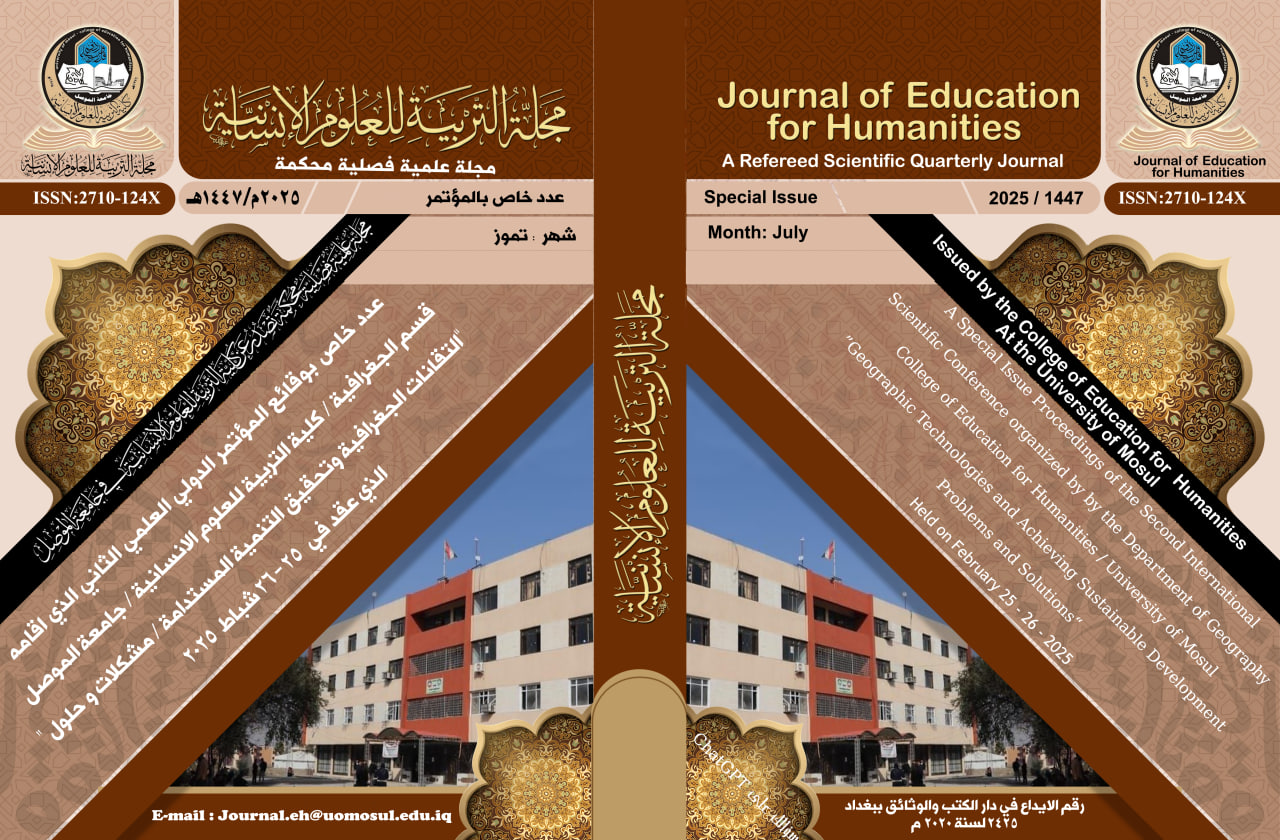Abstract
The study of groundwater quality is one of the main topics in water resources management. The importance of groundwater is not limited to its presence and abundance. Representing and analyzing groundwater properties using spatial data has become an urgent necessity in light of modern technical development. Modern techniques, represented by data analysis and drawing linear distributions, help in accurately expressing the natural properties of groundwater, by studying the hydrochemical properties represented by (electrical conductivity, salinity, hydrogen factor, and chemical composition of elements). These techniques also provide an analysis of the relationship between groundwater properties and factors such as productivity, well depth, and fixed (stable) and moving water levels, which contributes to improving water resources management and enhancing their sustainability. The use of available data in the study of groundwater requires the use of accurate methodologies that have the ability to link spatial data with qualitative characteristics, which gives a deeper understanding of the natural phenomena associated with groundwater. Data from (26) wells were collected to represent the groundwater characteristics of (16) variables. The well data were provided by the Ministry of Water Resources, the General Authority for Groundwater in Mosul, the Directorate of Groundwater, and the Department of Geology and Drilling. The study requires the adoption of the analytical inductive approach to achieve the research objectives. The study also showed the suitability of the Kriging and IDW methods in conducting spatial completion operations for groundwater characteristics, and obtaining (16) maps for each characteristic separately, showing its distribution and presence rates in the study area. The study indicates interest in this scientific and technical field and its application in other environmental studies and linking it to other branches of science as it prepares a database that can be used by decision maker
Keywords
Groundwater - Water Resources - Hydrochemistry - Groundwater Properties - Geology
Abstract
تُعد دراسة نوعية المياه الجوفية من المواضيع الرئيسة في إدارة الموارد المائية، ولا تقتصر,أهمية المياه الجوفية على وجـودها وكثرتها، إذ أصبح تمثيل خصائص المياه الجوفية وتحليلها باستخدام البيانات المكانية ضرورة ملحّة في ظل التطور التقني الحديث.تُساعد التقنيات الحديثة، المتمثلة بتحليل البيانات ورسم التوزيعات الخطية، في التعبير الدقيق عن الخصائص الطبيعية للمياه الجوفية، من خلال دراسة الخصائص الهيدروكيميائية المتمثلة بـ (التوصيلية الكهربائية ،نسبة الملوحة, والعامل الهيدروجيني ، والتركيب الكيميائي للعناصر). كما تعطي هذه التقنيات تحليل العلاقة بين خصائص المياه الجوفية وعوامل مثل الإنتاجية، عمق البئر، ومستوى المياه الثابت(المستقر), والمتحرك، مما يسهم في تحسين إدارة الموارد المائية وتعزيز استدامتها. يتطلب توظيف البيانات المتوفرة في دراسة المياه الجوفية استخدام منهجيات دقيقة لها القدرة على ربط المعطيات المكانية بالخصائص النوعية، مما يعطي فهماً أعمق للظواهر الطبيعية المرتبطة بالمياه الجوفية.ولقد تم جمع بيانات الآبار البالغة (26) بئراﹰﹰ ، لتمثيل خصائص المياه الجوفية لـ (16) متغيرا, وزودت بيانات الآبار من وزارة الموارد المائية، الهيئة العامة للمياه الجوفية الموصل، مديرية المياه الجوفية، قسم الجيولوجيا والحفر.،وتتطلب الدراسة اعتماد المنهج الاستقرائي التحليلي لتحقيق اهداف البحث ، كذلك اظهرت الدراسة ملائمة طريقتي كريكنج (Kriging)و( (IDWفي اجراء عمليات الاستكمال المكاني لخصائص المياه الجوفية، والحصول على (16) خريطة لكل خاصية على حدة توضح توزيعه ونسب تواجده في منطقة الدراسة،
Keywords
المياه الجوفية- الموارد المائية- الهيدروكيميائية- خصائص المياه الجوفية- الجيولوجيا
